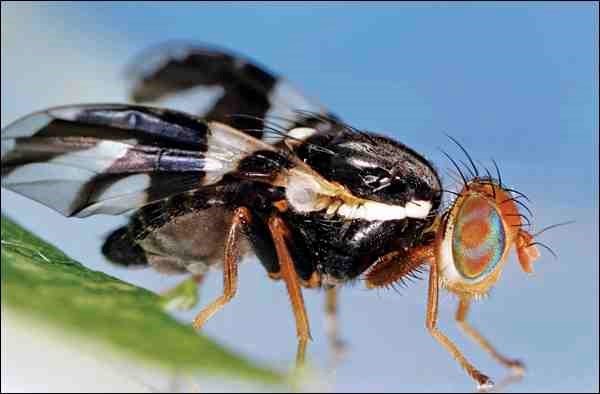"Picking up all early-dropped fruit every few days and feeding it to hogs will destroy many of the larvae before they have left the apples." C.L. Metcalf, 1962
If this was about biotechnology, adding protein to fruit might be taken as cutting-edge genetic engineering or a major breakthrough in feeding a rapidly over-populated world. But the presence of worms in apples is more likely to evoke a sudden change in body language in a gardener, a stiffening resolve to gear up to destroy the culprit.
Three types of insect larvae are commonly found in apples in late summer and early fall, albeit almost always in small numbers and generally in isolated pockets of the prairies. They share a number of traits. All are deposited as eggs by caring mothers on the newly developing fruit. In the course of feeding, they leave tell-tale trails. They all fall (or are picked) within the apples in autumn, over wintering either within the apple or in the soil nearby, ready to begin their life cycle again the following spring.
The apple curculio is a reddish-brown insect about 1/10 of an inch long, similar to a weevil with a long nose and a humped back. The adults feed on the buds, fruit spurs and terminal shoots. If you place a sheet or tarp below and shake the branches, they fall to the ground and "play dead."
Curculios begin to lay eggs shortly after petal fall and continue for about a month afterwards. They leave a dimple or cluster of puncture marks on the skin of the apple where the eggs were deposited. Fruit may be misshapen, undersized or drop pre-maturely. The egg hatches into a tiny white legless larva that makes its way to the core of the apple, leaving a trail of narrow light brown streaks within the flesh. Once in the core, they eat the developing seeds.
They pupate within the apple, emerging as adult beetles after the fruit has fallen to the ground and over winter in the nearby soil.
The apple seed chalcid is a very tiny winged wasp that infests the seeds of apple. The adults lay eggs in developing fruit in mid-June. Upon hatching, the larvae tunnel to the core where they feed inside seeds. Small brown trails through the flesh indicate their route. They remain within the fruit, even after it falls to the ground, over winter still within the core and emerge as adults in the spring.
Adult apple maggots, also called railroad worms because of the numerous twisting tunnels they leave within the fruit, resemble small dark house flies. They lay eggs in the developing fruit in June and July. The larvae tunnel within the flesh of the apple. Like the apple curculio, they fall to the ground within the fruit in autumn but soon exit to pupate in the soil.
If you've come across one of these insects this fall, chances are they'll be around next spring unless you do something to interrupt their life cycle. Begin this fall by collecting all of the fruit remaining on the tree or fallen to the ground. If you have no hogs, destroy or send the infested apples to the landfill. Putting them in the compost pile merely provides them with an Arizona-like winter. The apple seed chalcid remains within the fruit until next spring. The apple maggots and curculios will over winter in the nearby soil. Remove as much leaf litter and debris as possible to eliminate habitat. Then cultivate as late in the fall as possible to bring pupal cases and adults to the soil surface where they'll be more vulnerable to winter cold. In spring, use yellow sticky traps to immobilize adult apple maggots prior to egg laying
As for the loss of protein, I've always preferred a chunk of cheese with an apple.
- Sara Williams is the author of the newly revised and expanded Creating the Prairie Xeriscap' and with co-author Hugh Skinner Gardening Naturally. This column is provided by the Saskatchewan Perennial Society.




